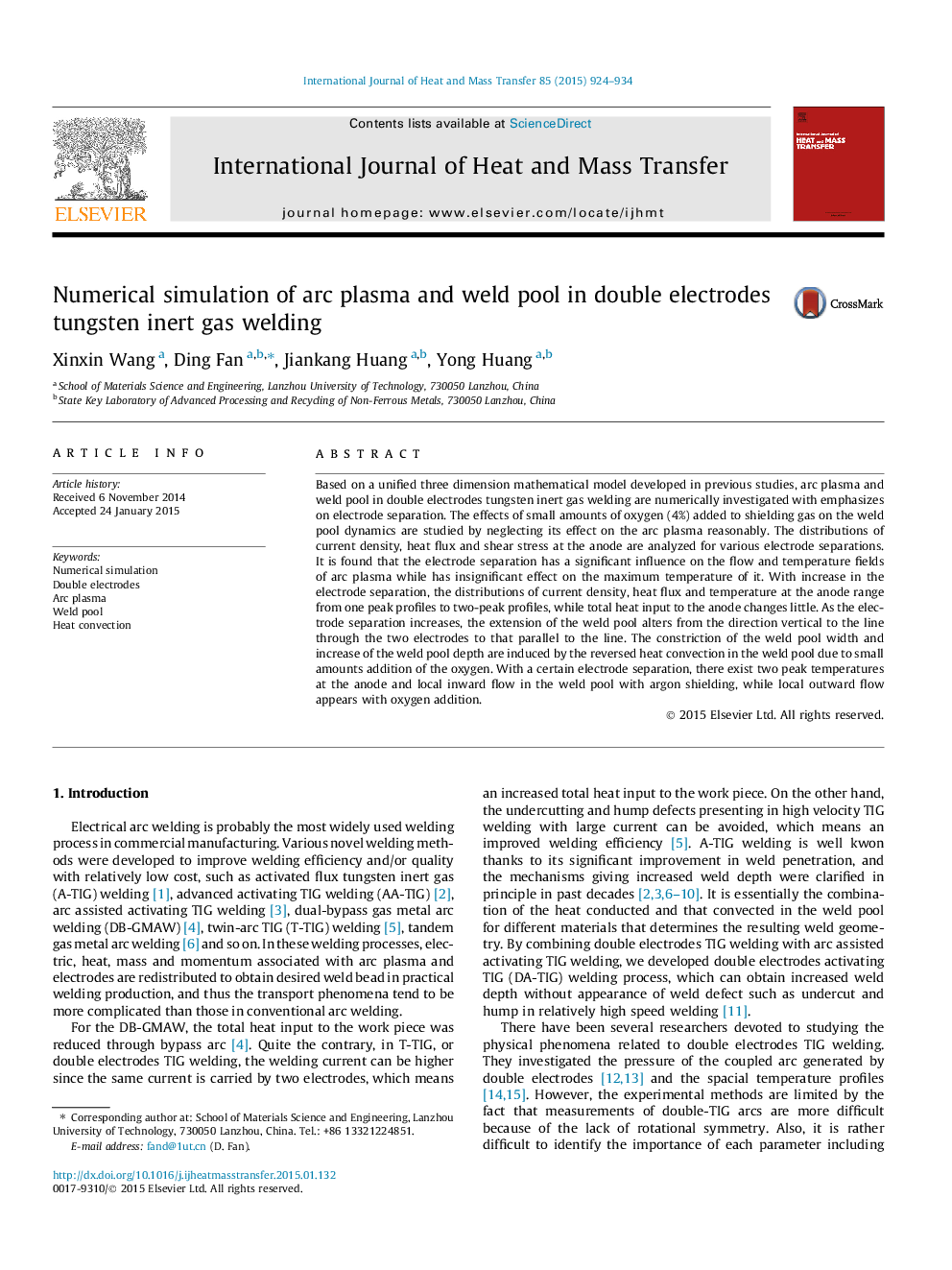| Article ID | Journal | Published Year | Pages | File Type |
|---|---|---|---|---|
| 7056725 | International Journal of Heat and Mass Transfer | 2015 | 11 Pages |
Abstract
Based on a unified three dimension mathematical model developed in previous studies, arc plasma and weld pool in double electrodes tungsten inert gas welding are numerically investigated with emphasizes on electrode separation. The effects of small amounts of oxygen (4%) added to shielding gas on the weld pool dynamics are studied by neglecting its effect on the arc plasma reasonably. The distributions of current density, heat flux and shear stress at the anode are analyzed for various electrode separations. It is found that the electrode separation has a significant influence on the flow and temperature fields of arc plasma while has insignificant effect on the maximum temperature of it. With increase in the electrode separation, the distributions of current density, heat flux and temperature at the anode range from one peak profiles to two-peak profiles, while total heat input to the anode changes little. As the electrode separation increases, the extension of the weld pool alters from the direction vertical to the line through the two electrodes to that parallel to the line. The constriction of the weld pool width and increase of the weld pool depth are induced by the reversed heat convection in the weld pool due to small amounts addition of the oxygen. With a certain electrode separation, there exist two peak temperatures at the anode and local inward flow in the weld pool with argon shielding, while local outward flow appears with oxygen addition.
Related Topics
Physical Sciences and Engineering
Chemical Engineering
Fluid Flow and Transfer Processes
Authors
Xinxin Wang, Ding Fan, Jiankang Huang, Yong Huang,
